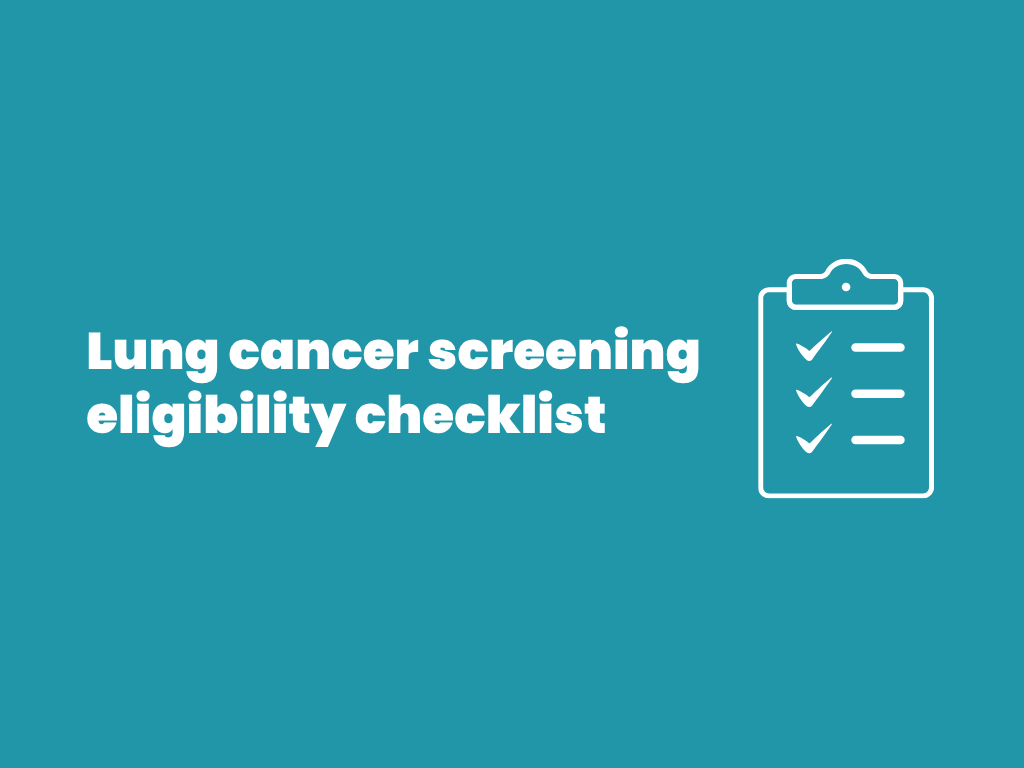
Am I eligible for lung cancer screening? A simple checklist
Most people with early-stage lung cancer have no symptoms. That is why screening is important — it can help find lung cancer before you feel unwell.
Research shows that lung cancer screening using a special type of scan called a low-dose CT scan can save one life for every five that might have been lost without screening people who are at a higher risk. This is because screening can detect cancer at an early stage, when treatment is more likely to work well.
In many European countries, screening programmes are being developed or expanded to reach more people at risk. The exact rules about who can take part vary depending on where you live, so it is always best to check local guidance or ask your healthcare professional.
This checklist can help you understand whether you might be in a group that could be offered lung cancer screening.
A simple checklist to consider
You are more likely to be invited for lung cancer screening if most or all of these apply:
- You are aged between 55 and 74 years. In some countries, screening starts at age 50 or continues up to 80, so age limits can differ.
- You currently smoke or have smoked in the past, with a smoking history of at least 20 pack years. A “pack year” measures how much you have smoked over time. For example:
- 20 pack years means smoking one pack (20 cigarettes) per day for 20 years.
- Or two packs per day for 10 years.
- Or half a pack per day for 40 years.
- You do not have symptoms of lung cancer. Screening is designed for people who feel generally well but have a higher risk because of their smoking history and age.
If you have any symptoms, such as a cough that lasts more than a few weeks, chest pain, or unexplained weight loss, see your doctor as soon as possible.
What is involved in screening?
Lung cancer screening is usually done with a low-dose computed tomography (CT) scan.
A CT scan is a type of X-ray that takes detailed pictures of the inside of your lungs. “Low-dose” means it uses a much smaller amount of radiation than a standard CT scan.
The scan itself is quick and painless. You lie on a table that moves through a circular scanner. The process only takes a few minutes, and you can go home afterwards.
Sometimes the scan shows a small spot on the lung called a nodule. Many nodules are harmless, but some may need more tests to check if they could be cancer. If anything serious is found, treatment can begin early, when there is a better chance of success.
If your scan does not show anything concerning, you will usually be invited back for another scan in a year to monitor your lungs over time, though the frequency may vary by country.
Read this article for more information.
Why do screening criteria vary?
Each country in Europe plans its own screening programme based on its healthcare system, resources, and public health priorities. For example, the age ranges, how smoking history is calculated, and how people are invited can differ between countries such as France, Germany, the UK and more.
This is why it is important to look up national or regional guidance or ask your doctor or nurse for accurate information about whether you can take part.
If you are not sure, ask
If you think you might be eligible or have questions about your risk, talk to your healthcare professional. They can help you understand your options and whether lung cancer screening is right for you.
Remember: Even if you feel well, screening can help detect lung cancer early, when it is easier to treat. If you ever have symptoms, see a doctor as soon as possible instead of waiting for your next screening invitation.

